Items filtered by date: September 2025
Finding the Right Shoes for Running and Walking
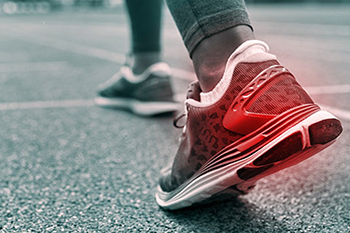
The right shoes can make a major difference in comfort and injury prevention. Running shoes are designed with enhanced cushioning for impact, stability features such as medial posts, and flex grooves in the outsole for natural motion. They are also lightweight to reduce fatigue during longer runs. Walking shoes provide moderate cushioning for shock absorption, promote a healthy foot strike, and offer increased flexibility in the forefoot for smooth steps. Breathability keeps feet comfortable during daily activity. A podiatrist can assess your foot structure and gait to recommend the best shoe for your needs. If you have foot pain from wearing the wrong shoes, it is suggested that you consult a podiatrist who can treat various foot conditions and guide you on the best shoes to wear for the activities you participate in.
For more information about walking shoes versus running shoes, consult with Judson Siegel, DPM from Assabet Family Podiatry. Our doctor can measure your feet to determine what your needs are and help you find an appropriate pair of footwear.
Foot Health: The Differences between Walking & Running Shoes
There are great ways to stay in shape: running and walking are two great exercises to a healthy lifestyle. It is important to know that running shoes and walking shoes are not interchangeable. There is a key difference on how the feet hit the ground when someone is running or walking. This is why one should be aware that a shoe is designed differently for each activity.
You may be asking yourself what the real differences are between walking and running shoes and the answers may shock you.
Differences
Walking doesn’t involve as much stress or impact on the feet as running does. However, this doesn’t mean that you should be any less prepared. When you’re walking, you land on your heels and have your foot roll forward. This rolling motion requires additional support to the feet.
Flexibility – Walking shoes are designed to have soft, flexible soles. This allows the walker to push off easily with each step.
If you have any questions, please feel free to contact our offices located in Plainville, Marlborough, and Somerset, MA . We offer the newest diagnostic and treatment technologies for all your foot care needs.
What Can I Do to Prevent Running Injuries?
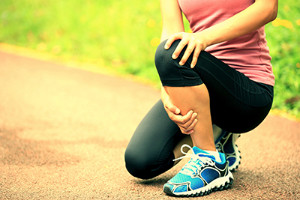 Running is a well-known sport that is loved by many people. However, without the proper knowledge of technique and equipment, many people can suffer running injuries. To avoid these types of injuries, it’s beneficial to gain knowledge on specific prevention tips you can practice while performing the sport. Strengthening your body is an important step in this process. Activation exercises can be useful to look into and perform before you go on a run, that way your body is prepared for physical activity. Increasing the intensity of your runs must be done gradually or your body will react negatively. Another factor in injury prevention is proper footwear. Your shoes should fit comfortably and also offer the necessary support features for the type of running you enjoy. For more information on how to prevent running injuries, please consult with a podiatrist for professional advice and care.
Running is a well-known sport that is loved by many people. However, without the proper knowledge of technique and equipment, many people can suffer running injuries. To avoid these types of injuries, it’s beneficial to gain knowledge on specific prevention tips you can practice while performing the sport. Strengthening your body is an important step in this process. Activation exercises can be useful to look into and perform before you go on a run, that way your body is prepared for physical activity. Increasing the intensity of your runs must be done gradually or your body will react negatively. Another factor in injury prevention is proper footwear. Your shoes should fit comfortably and also offer the necessary support features for the type of running you enjoy. For more information on how to prevent running injuries, please consult with a podiatrist for professional advice and care.
All runners should take extra precaution when trying to avoid injury. If you have any concerns about your feet, contact Judson Siegel, DPM of Assabet Family Podiatry. Our doctor will treat your foot and ankle needs.
How to Prevent Running Injuries
There are a lot of mistakes a runner can make prior to a workout that can induce injury. A lot of athletes tend to overstretch before running, instead of saving those workouts for a post-run routine. Deep lunges and hand-to-toe hamstring pulls should be performed after a workout instead of during a warmup. Another common mistake is jumping into an intense routine before your body is physically prepared for it. You should try to ease your way into long-distance running instead of forcing yourself to rush into it.
More Tips for Preventing Injury
- Incorporate Strength Training into Workouts - This will help improve the body’s overall athleticism
- Improve and Maintain Your Flexibility – Stretching everyday will help improve overall performance
- “Warm Up” Before Running and “Cool Down” Afterward – A warm up of 5-10 minutes helps get rid of lactic acid in the muscles and prevents delayed muscle soreness
- Cross-Training is Crucial
- Wear Proper Running Shoes
- Have a Formal Gait Analysis – Poor biomechanics can easily cause injury
If you have any questions, please feel free to contact our offices located in Plainville, Marlborough, and Somerset, MA . We offer the newest diagnostic and treatment technologies for all your foot care needs.
Are You Suffering From Nerve Damage?
Cracked Heels and Help From a Podiatrist
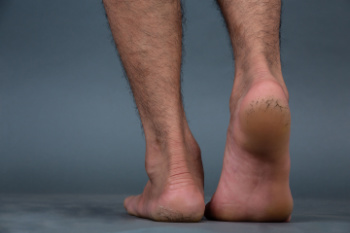
Cracked heels are a common foot problem that occurs when the skin surrounding the heel becomes dry, hard, and thickened, often due to pressure, lack of moisture, or prolonged standing. Symptoms include rough patches of skin on the heel edge that may split and cause pain. In severe cases, the cracks can deepen and become infected, sometimes leading to cellulitis, which requires medical attention. A podiatrist can help by safely removing thickened skin, providing moisturization plans, recommending footwear to reduce pressure, and addressing any underlying conditions. If cracked heels are left untreated they may worsen over time. If you have developed cracked heels, it is suggested that you promptly contact a podiatrist who can effectively treat this condition, which may include prescribed medication.
Cracked heels are unsightly and can cause further damage to your shoes and feet. If you have any concerns, contact Judson Siegel, DPM from Assabet Family Podiatry. Our doctor can provide the care you need to keep you pain-free and on your feet.
Cracked Heels
Cracked heels appear unappealing and can make it harder for you walk around in sandals. Aside from looking unpleasant, cracked heels can also tear stockings, socks, and wear out your shoes. There are several methods to help restore a cracked heel and prevent further damage.
How Do You Get Them?
Dry skin is the number one culprit in creating cracked heels. Many athletes, walkers, joggers, and even swimmers suffer from cracked heels. Age and skin oil production play a role to getting cracked heels as well.
Promote Healing
Over the counter medicines can help, especially for those that need instant relief or who suffer from chronic dry feet.
Wear Socks – Wearing socks with medicated creams helps lock in moisture.
Moisturizers – Applying both day and night will help alleviate dryness which causes cracking.
Pumice Stones – These exfoliate and remove dead skin, which allows for smoother moisturizer application and better absorption into the skin.
Change in Diet
Eating healthy with a well-balanced diet will give the skin a fresh and radiant look. Your body responds to the kinds of food you ingest. Omega-3 fatty acids and zinc supplements can also revitalize skin tissue.
Most importantly, seek professional help if unsure how to proceed in treating cracked heels. A podiatrist will help you with any questions or information needed.
If you have any questions, please feel free to contact our offices located in Plainville, Marlborough, and Somerset, MA . We offer the newest diagnostic and treatment technologies for all your foot care needs.
Understanding Diabetic Blisters on the Feet
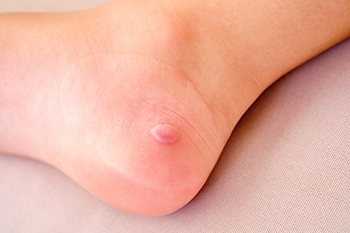
Diabetic blisters are a rare but serious skin complication that can occur in people with diabetes. These blisters often appear suddenly, usually on the feet or toes, and may resemble burn blisters. They are typically painless, filled with clear fluid, and may be surrounded by slightly red or swollen skin. Poor circulation, nerve damage, and uncontrolled blood sugar levels are common causes. While they may heal on their own, diabetic blisters are a warning sign of underlying issues and can lead to infections, if not cared for properly. A podiatrist can diagnose diabetic blisters through a physical exam and an evaluation of medical history. Treatment focuses on protecting the area, preventing infection, and management of blood sugar levels. In some cases, topical medications or dressings may be applied. If you notice unexplained blisters on your feet, especially without injury, it is suggested that you schedule an appointment with a podiatrist for proper care and monitoring.
Blisters are prone to making everyday activities extremely uncomfortable. If your feet are hurting, contact Judson Siegel, DPM of Assabet Family Podiatry. Our doctor can provide the care you need to keep you pain-free and on your feet.
Foot Blisters
Foot blisters develop as a result of constantly wearing tight or ill-fitting footwear. This happens due to the constant rubbing from the shoe, which can often lead to pain.
What Are Foot Blisters?
A foot blister is a small fluid-filled pocket that forms on the upper-most layer of the skin. Blisters are filled with clear fluid and can lead to blood drainage or pus if the area becomes infected.
How Do Blisters Form?
Blisters on the feet are often the result of constant friction of skin and material, usually by shoe rubbing. Walking in sandals, boots, or shoes that don’t fit properly for long periods of time can result in a blister. Having consistent foot moisture and humidity can easily lead to blister formation.
Prevention & Treatment
It is important to properly care for the affected area in order to prevent infection and ease the pain. Do not lance the blister and use a Band-Aid to provide pain relief. Also, be sure to keep your feet dry and wear proper fitting shoes. If you see blood or pus in a blister, seek assistance from a podiatrist.
If you have any questions, please feel free to contact our offices located in Plainville, Marlborough, and Somerset, MA . We offer the newest diagnostic and treatment technologies for all your foot care needs.
Understanding Athlete’s Foot and Relief Tips
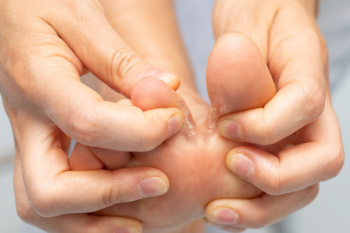
Athlete’s foot is a fungal infection that affects the skin of the feet, often developing between the toes. It thrives in warm and moist environments, making locker rooms, around pools, and tight footwear common sources of exposure. Symptoms include itching, burning, redness, peeling skin, and sometimes blisters or cracked areas that can become painful. Risk factors include excessive sweating, walking barefoot in public places, or wearing shoes that do not allow the feet to breathe. A podiatrist can diagnose the condition, provide effective anti-fungal treatments, and recommend prevention strategies to keep feet healthy. If you are experiencing signs of athlete’s foot, it is suggested that you consult a podiatrist who can provide effective treatment solutions, which may include prescribed medication.
Athlete’s Foot
Athlete’s foot is often an uncomfortable condition to experience. Thankfully, podiatrists specialize in treating athlete’s foot and offer the best treatment options. If you have any questions about athlete’s foot, consult with Judson Siegel, DPM from Assabet Family Podiatry. Our doctor will assess your condition and provide you with quality treatment.
What Is Athlete’s Foot?
Tinea pedis, more commonly known as athlete’s foot, is a non-serious and common fungal infection of the foot. Athlete’s foot is contagious and can be contracted by touching someone who has it or infected surfaces. The most common places contaminated by it are public showers, locker rooms, and swimming pools. Once contracted, it grows on feet that are left inside moist, dark, and warm shoes and socks.
Prevention
The most effective ways to prevent athlete’s foot include:
- Thoroughly washing and drying feet
- Avoid going barefoot in locker rooms and public showers
- Using shower shoes in public showers
- Wearing socks that allow the feet to breathe
- Changing socks and shoes frequently if you sweat a lot
Symptoms
Athlete’s foot initially occurs as a rash between the toes. However, if left undiagnosed, it can spread to the sides and bottom of the feet, toenails, and if touched by hand, the hands themselves. Symptoms include:
- Redness
- Burning
- Itching
- Scaly and peeling skin
Diagnosis and Treatment
Diagnosis is quick and easy. Skin samples will be taken and either viewed under a microscope or sent to a lab for testing. Sometimes, a podiatrist can diagnose it based on simply looking at it. Once confirmed, treatment options include oral and topical antifungal medications.
If you have any questions, please feel free to contact our offices located in Plainville, Marlborough, and Somerset, MA . We offer the newest diagnostic and treatment technologies for all your foot care needs.

